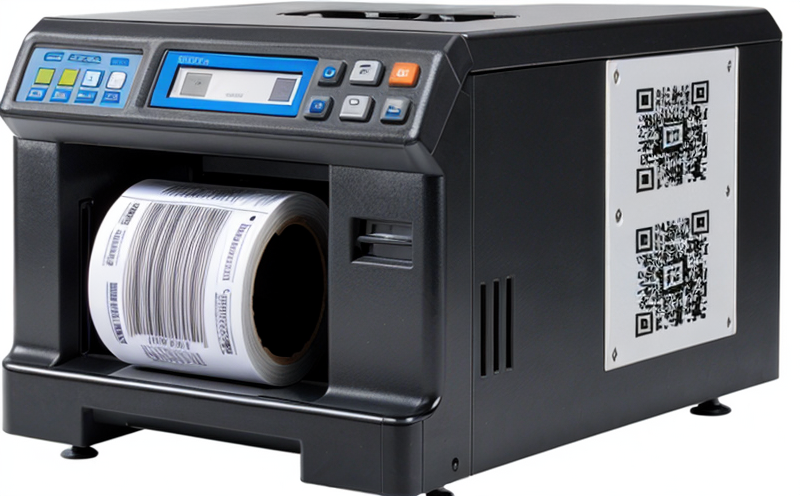ISO 15323 Packaging Label Dimension Accuracy
The ISO 15323 standard is a critical component in the quality assurance process for packaging labels, particularly those used on food and pharmaceutical products. This standard ensures that label dimensions are consistent with product specifications to prevent mislabeling issues that could lead to safety hazards or consumer dissatisfaction.
Compliance with ISO 15323 is essential for businesses operating in the global supply chain, especially when dealing with international markets where regulatory standards can vary. The standard specifies precise measurement methods and acceptance criteria for label dimensions, ensuring uniformity across different packaging sizes and substrates. This uniformity is crucial for maintaining brand consistency and regulatory compliance.
The testing process involves several key steps: specimen preparation, measurement using high-precision instruments, and evaluation against the specified tolerances outlined in ISO 15323. The primary goal is to ensure that labels adhere accurately to the packaging they are intended for, with no deviation from the required dimensions.
One of the challenges faced by industries adhering to this standard is ensuring that labels meet both dimensional and visual standards simultaneously. This dual requirement adds complexity to the testing process but also underscores its importance in maintaining product integrity and consumer trust. By focusing on precision and accuracy, ISO 15323 helps businesses avoid costly recalls and legal issues associated with non-compliance.
For quality managers and compliance officers, understanding the nuances of this standard can significantly enhance their ability to manage supply chain risks. R&D engineers benefit from knowing how ISO 15323 influences the design phase, ensuring that prototypes align perfectly with final product specifications. Procurement teams also play a vital role by selecting suppliers who meet these stringent standards.
| Key Parameters | Description |
|---|---|
| Measurement Tool | Highest accuracy calipers or laser scanners |
| Sample Size | A minimum of 5 samples per batch size |
| Acceptance Criteria | Tolerances defined by ISO 15323 |
- Accurate labeling is critical for maintaining brand identity.
- Ensures consistent product identification across various market segments.
- Avoids potential legal issues related to non-compliance with international standards.
- Promotes trust among consumers by ensuring reliable product information.
Customer Impact and Satisfaction
- Enhanced customer satisfaction through accurate label placement.
- Reduction in complaints due to mislabeling or incorrect information.
- Increased brand loyalty by ensuring consistent product presentation.
- Better compliance with international regulations, reducing legal risks.
Accurate labeling not only improves the overall customer experience but also contributes significantly to maintaining a positive reputation. By adhering strictly to ISO 15323 guidelines, companies can ensure that their products meet the highest quality standards, thereby fostering long-term relationships with customers.
The impact of accurate labels extends beyond mere compliance; it plays a crucial role in building brand trust and loyalty. Customers appreciate brands that take extra steps to ensure accuracy and reliability, which in turn leads to higher satisfaction levels and repeat purchases.
From an operational perspective, meeting ISO 15323 requirements streamlines production processes by reducing the likelihood of errors during labeling. This efficiency translates into cost savings for businesses while simultaneously enhancing their competitive edge in the market.
Competitive Advantage and Market Impact
Compliance with ISO 15323 can provide a significant competitive advantage by setting a benchmark for quality that exceeds industry expectations. In today's highly competitive market, where customer trust is paramount, adherence to this standard positions companies as leaders in their respective fields.
Beyond just compliance, meeting these stringent requirements demonstrates a commitment to excellence and innovation. This dedication can differentiate a company from its competitors, making it more attractive to both consumers and investors alike.
The market impact of ISO 15323 is substantial. By ensuring that all packaging labels meet the same rigorous standards, companies contribute to creating a level playing field within their industry. This consistency helps protect consumer rights while fostering innovation through standardization.
Adopting this standard early can also position a company as an industry trendsetter, influencing future developments in labeling technology and practices. As more stakeholders recognize the value of precise labeling, compliance becomes not just a requirement but a strategic asset for business growth.
Use Cases and Application Examples
The ISO 15323 standard is widely applicable across various sectors, including food and beverage, pharmaceuticals, cosmetics, and electronics. Its primary application lies in ensuring that labels are printed correctly on packaging to convey accurate product information.
| Application Sector | Description of Use Case |
|---|---|
| Food and Beverage Industry | Ensuring label dimensions match the container size accurately for all products, from beverages to snacks. |
| Pharmaceutical Industry | Guaranteeing that dosage instructions are correctly placed on packaging to prevent potential misuse or overdose. |
| Cosmetics Industry | Accurate labeling of ingredients and usage information is crucial for consumer safety and product effectiveness. |
| Electronics Industry | Ensuring that detailed instructions for use are correctly printed on the packaging to guide proper installation and maintenance. |
- Accurate measurement of label dimensions using precision instruments.
- Evaluation against ISO 15323 acceptance criteria.
- Adjustment of printing processes if deviations are found.
- Ongoing monitoring to maintain consistent quality.





